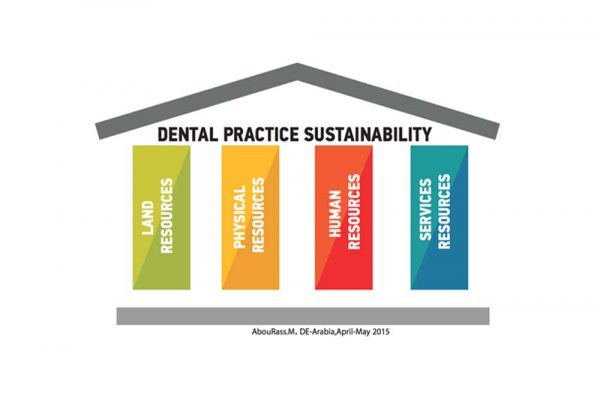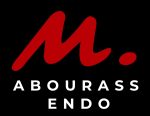Economics- Based Dental Practice Management

- Study Club Period : Ten (10) consecutive weekly sessions, Two 2 hours each. Six (6) are presentations by Prof Abou-Rass and four (4) are interactive workshop by the Study club members.
- Friday Time : 8:00 PM. KSA Meeting period: two (2) hours
- Price: 2000 USD
The Club Concept
The word “economics” is derived from the Greek word “Oikonomikos,” composed of two words: oikos, (home) and nomos (management). The word “economics,” then, implies management of the home—tending to needs both physical and psychological. Prof. Abou-Rass believes It is extraordinarily useful to approach practice management from the perspective of household economics. that is, build, manage, and operate the dental practice according to established managerial economic principles to optimally meet the physical and psychological needs of “patients” and the “people” of the practice.
- The Study club curriculum content is the positive and negative indicators of the Real estate resources, Physical resources, Human resources, and Products and Services.
- A detailed schedule of the online study club meetings is sent upon registration.
- The ultimate purpose of the Study club is: By the end of the Study club meetings, each participant would have completed an assessment report based on Dental Household Economics Model. The report includes recommendations and action plan private document used the to prepare related to his or her dental practice.
Household Economics Concept
Paul Samuelson, the first American to receive the 1970 Nobel Prize in Economics, defined Economics as: "The study of how people and society end up choosing, with or without the use of money, to employ scarce productive resources that could have alternative uses to produce various commodities over time and distributing them for consumption, now or in the future, among various persons or groups in society. It analyses the costs and benefits of improving patterns of resource allocation." Whereas Macroeconomics is concerned with regional, national or international economics, microeconomics is concerned with "Household Economics," which are the smaller units such as Healthcare Economics. The definition of Household economics includes a land resource that holds a variety of efficient physical resources operated by a group of qualified professionals whose interests are interrelated to produce services or products needed by society in general or the relevant professionals. Therefore, to apply the Household Economics criteria to dentistry, an Economically operated and managed dental practice must have:
I- Real Estate Resources:
Proper real estate location and physical facilities.
II- Physical Resources:
Efficient facilities, dental units, equipment, and supplies
III- Human Resources:
Group of qualified general practitioners, dental specialists, dental hygienists, dental assistants, patient care coordinators, practice managers, back and front office staff whose goals are to produce oral health care services needed by the Public, Society, patients, and other healthcare professionals.
IV- Services or Products:
The Products are Oral health prevention and treatment services Performed by the human resources group.
Prof Abou-Rass has developed a Dental Household Economics Model (DHEM) model, which includes a core listing of positive and negative indicators. The listing items are guidelines to establish, organize, administer, operate, and evaluate the Health status of a dental practice. DHEM can also be used effectively with dental Laboratory, oral healthcare program, or teaching institutions.
Dental Household Economics curriculum
Real Estate Resources
"The three most important considerations in real estate are location, location, location." This statement continues to be real and fundamental to the establishment of successful dental practice.
Positive Indicators:
- Ideal geographic location?
- Ideal demographics
- Lack of severe professional competition
- Real estate ownership
- Plenty of available space
Negative Indicators:
- The demographics are inconsistent with the dental practice's vision, goals, and services.
- Improper geographic location
- Presence of severe professional competition
- Limited space
- Unrealistic Real estate renting or leasing contract terms
Physical Resources
The dental practice design should meet modernity, safety, and efficiency requirements to promote patient comfort and excellent quality care.
Positive Indicators:
- Modern facilities
- State-of-the-art medical and dental equipment operated by competent and trained staff
- Brand-names dental instruments, materials, and supplies
- State-of-the-art practice management systems operated by trained staff.
- There are Protocols for Clinical Procedures, Patient monitoring from admission to treatment completion.
- Availability of mini dental laboratory
- Central sterile services department (CSSD)
- Central medical and dental supply dispensary
- Patient communication and education room
Negative Indicators:
- Outdated general infrastructure (i.e., facilities and furniture)
- Outdated or unmaintained medical and dental equipment
- Shortage of quality dental instruments, materials, and supplies
- Outdated patient record-keeping methods
- Lack of written operational policies.
- Lack of written patient care protocols, patient admission, monitoring patient complaints, clinical treatment, preventative treatment, and follow-up care • Substandard instruments sterilization methods
- Unacceptable infection control practices - Lack of dental laboratory facilities
Human Resources
The human resources requirements in dentistry have changed significantly from one dentist's solo practice model's superficial needs and one to the more complex needs and demands of the dental group practice model. The Household Economics model requires that the human resources of modern dental practice include, on a full-time basis, four professional staff teams:
- The medical team of clinician
- The paramedical team of dental surgery assistants DSA's, defined here as the back office team
- The administrative practice team is defined here as the front office team.
- The co-ordination team
Positive Indicators:
The medical team :
- Composed of a core of tenured, experienced general dentists who provide and coordinate all patient care.
- A team of certified clinical specialists, dental hygienists, and dental technicians support the general dentists' team.
- Subspecialties such as aesthetic dentistry, same-day dentistry are becoming an essential part of the modern dental practice. Specialists in these areas should be an integral part of the team.
The back office team:
This team is the paramedical staff and should be composed of certified Dental Surgery Assistants (DSA) , assigned to the following duties:
- One DSA is assigned to each dental operatory as a supervisor and chairside assistant
- One DSA is assigned to each dental operatory as a rover
- One DSA is assigned to manage the central sterile services facility
- One DSA is assigned to manage the central dental supply dispensary
- Training of All DSA patient care staff to operate the new technology equipment
The front offices' team
Should include a team of certified staff assigned to the following duties:
- Dental practice general management
- Patients' reception affairs
- Patients' records affairs
- Patients' scheduling affairs
- Insurance and finance affairs
- Marketing affairs
The co-ordination team should include:
- One DSA assigned as a Patient care treatment coordinator. Her responsibility is to monitor the patient care progress from start to end.
- One DSA assigned as Practice flow coordinator. Her responsibility is to monitor the workflow between the medical, the front and back office teams and avoid conflict, and resolve problems.
There is evidence of continuing self-development courses and on the job in-service training programs.
Negative Indicators:
- The general dentists' group backgrounds do not meet the requirements of tenure and clinical experience
- There is a lack of full-time, qualified dental specialists to support the general dentists, a situation that causes the general dentists to refer the patients to outside specialists or perform treatments beyond their clinical skills and capabilities
- There is a lack of full-time, qualified dental hygienists and dental technicians
- The back office is understaffed
- The front office is understaffed
- An unhealthy work environment is characterized by subgrouping, prejudice, and indifference
Services & Products Resources
The medical, front, and back-office staff's collective performance will ultimately determine the economic and professional success or failure of the dental practice.
Positive Indicators:
- The recognized professional reputation of the medical team
- The practice has an extensive patient database or patient waiting lists.
- The practice has formal periodic dental hygiene programs.
- There is a system of monitoring patient's records for follow-up care or assessment.
- Patient care records show clear documentation of diagnosis and treatment notes.
- Availability of multimedia oral health promotion and education programs
- Availability of patient satisfaction surveys and feedback
Negative Indicators:
- Evidence of patient neglect and abandonment
- Lack of patient dental hygiene and preventive dentistry programs
- Substandard patient records. Characterized with disorganization and poor documentation - Evidence of formal and legal patient's complaints against the practice

